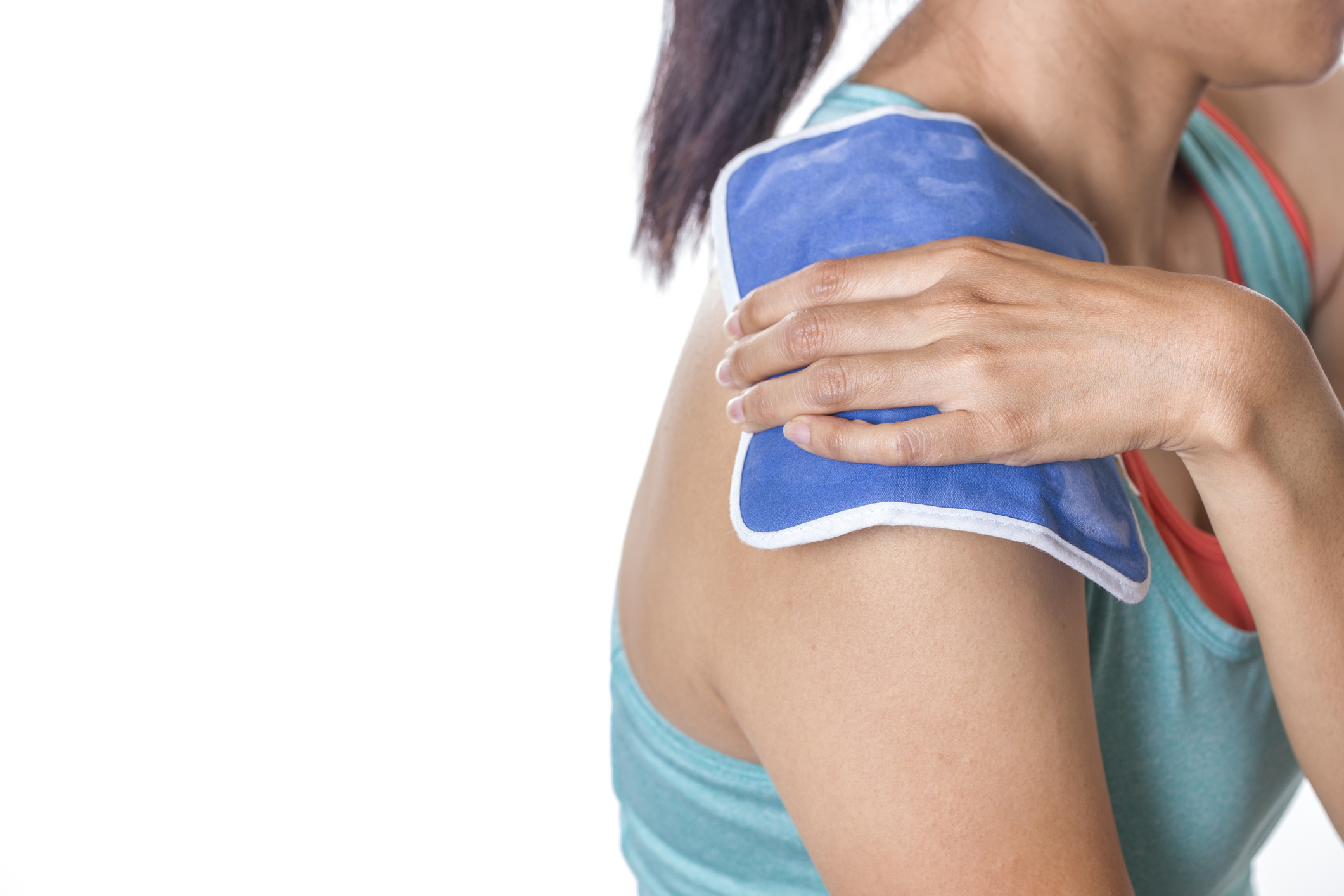As dancers, we are probably all very familiar with the use of ice on small, localized areas to help with various aches and pains, swelling and both overuse and acute injuries to our musculoskeletal system. Who among us, who has passed childhood, has not iced a sore muscle, put an icepack on an achy joint, or held their cool water bottle to their forehead? Most of us, however, might not have tried whole-body cryotherapy (WBC), during which we fully submerge in extremely cold water, ice water or a tub of ice, place our body in a nitrogen-cooled box, or sit in a chamber with nitrogen-cooled walls. It’s a little more difficult to pull off at home for sure, but it is becoming a more widely available treatment for people outside of high-level athletics.
The term cryotherapy refers to cold therapy – this means the use of ice, cold water, cold air or other cold materials on the body for therapeutic purposes. The cold can be applied to a highly specific point, such as when it is blasted onto a tumor, applied across a particular area like when you ice your foot, or cover the whole body by dunking into a tub filled with ice water or sitting in a cooled room.
Even though it’s currently a fad for the general population, the use of cold as therapy has been around for thousands of years. Along with use for therapeutic purposes, it was also used for invigoration (refreshing glass of ice water, anyone?) and taken orally or as a bath.
WBC is recognized to have entered the realm of clinical use in the early 1980s when a Japanese professor began using it in his clinic after seeing how a combination of cold and physical exercise proved beneficial for his patients with rheumatoid arthritis who bathed in cold pools over their winter holidays. Over the years, scientists have studied the effects of cryotherapy, how it appears to work, how best it should be applied, and with what conditions it appears most effective. The standard protocol for clinical use is for the patient, clothed in a swimsuit, slippers and surgical mask, to enter a chamber set to -60° C (-76° F) for the body to adjust for 30 seconds, and then enter the cryochamber set to -110° C to -140° C (-166° to -220° F) and remains for up to three minutes (optimally for two minutes). The patient’s skin must be completely dry; otherwise, sweat and other moisture could freeze and burn the skin.
By now, 40 years after being introduced to the scientific and medical community at large, the use of cryotherapy is widespread among athletes, and WBC is gaining traction within other populations, including dancers. Dancing with the Stars pros Derek Hough and Mark Ballas have posted on Instagram with photos of themselves at cryotherapy centers. But before you start copying them, let’s take a look at some of the possible effects of WBC and then go over a simpler method you can use at home!
In a thorough review of the most recent scientific literature that was published earlier this year, a team of scientists led by Giovanni Lombardi, based at the Laboratory of Experimental Biochemistry and Molecular Biology in Milan, Italy, put together an excellent summary of what we currently know about WBC. Keep in mind that most of the healthy, athletic people who participated in the research were adult men. There has not been research done with dancers, people of various ages or almost any women.
Technical aspects
Overall, women and people with a lower body fat composition will experience a greater drop in body temperature. While WBC generally causes a greater temperature drop than cold water immersion, evidence suggests that, in a single session, neither method actually got the body temperature down to anti-inflammatory levels. In fact, for a given body part, application of an ice pack for 10 minutes will drop the temperature more than either five minutes of cold water immersion or three minutes of WBC. Maximum drop in core temperature occurs at about an hour after exposure to WBC.
Also of note is that some effects take five, 10 or 20 daily sessions of WBC; the results are not sustained over time, meaning your body does not adapt a new and improved way of functioning as a result; and the results can vary depending on timing, before, right after or later in the same day of a workout. In fact, it has been determined that a single session is not expected to have any real effect. Lombardi summarizes that a minimum of 20 sessions is required to even determine if an effect has occurred, and 30 sessions is optimal. Long-term studies, however, are difficult, and few have been carried out, so the actual effects over time are not really known.
Physiological effects
WBC appears to lower overall cholesterol, increasing HDL (good cholesterol) and lowering LDL (bad cholesterol). It does not appear to lead to changes in body mass, fat mass or lean body mass percentages, nor does it change levels of fat-affecting hormones, resting metabolic rate, or percentage of fat used as metabolic substrate. Effects do appear to be somewhat dependent on starting fitness level.
WBC possibly counteracts inflammation-induced resorption of bone, thus helping preserve bone density.
The analgesic and anti-inflammatory effects of WBC are probably what are most sought after by athletes and other patients. Much research has been done on these effects, and use for this purpose is widespread. WBC does appear to induce anti-inflammatory effects, but the effects are still debatable. Despite the mixed findings on what exactly is happening regarding inflammation, most researchers who have studied these effects still conclude that there are other positive results in subjective measures, including reports of improved pain, mood and quality of life. It is even less understood how these effects pan out when combined with specific training parameters.
Another potential use of WBC is to reduce stress by modifying how the body releases several hormones. There is not much research examining this, but one research study found it possible that it may help increase sleep, decrease fatigue and increase capacity for exercise among athletes.
Post-exercise recovery
The most oft claimed and most debated effect of WBC has to do with fatigue recovery and muscle damage recovery. Every time we work our muscles very hard, to the point that they are sore in the following days, we are creating tiny tears in the muscle. When those tears heal, the muscles become stronger, but while they heal we are sore. One particularly interesting finding was that while WBC improved athletes’ perception of muscular tiredness and pain, it did not actually improve the physiological markers of recovery. This suggests that, if someone uses WBC in order to feel better so they feel like their recovery time is really shortened, they still need to give themselves proper recovery time because they can’t simply rely on no longer feeling pain to know if they’ve recovered. It is also possible that this is related to a placebo effect – that because the athletes knew there might be benefits of WBC, it changed their perception and made them feel better due to a psychosomatic effect, but was not enough to necessarily have a physiological effect. So, reports of these sorts of improvements should be taken with an extra grain of salt.
WBC appears to improve acute recovery after high-intensity intermittent exercise. This may be because of the following possible effects: enhanced muscle oxygenation (possibly induced by peripheral vasoconstriction), lower submaximal heart rate, increased heart stroke volume, stimulated parasympathetic nervous system activity and increased norepinephrine. But, at the same time, this might not actually be any better than cheaper modalities like using an ice pack or submerging in cold water.
Anyone who wants to try WBC should check with their doctor first to make sure they don’t have any conditions that would place them at risk. And remember, all of this icing and deep cooling of the body is quite different from a proper cool down and should be a totally separate thing. As Edel Quinn and her co-authors point out in the new book Safe Dance Practice, your cool down should include a gradual drop in your pulse rate, easing the joints and slowly lengthening the muscles. Save your cold therapy for after!
DIY cryotherapy (AKA How to Ice)
According to excellent resources for dancers like the Harkness Center for Dance Injuries, NYU Langone Health, and the International Association for Dance Medicine and Science, ice can help reduce inflammation, swelling and pain. There are several good methods to apply ice.
#1. Ice bag: Fill a plastic bag with ice, wrap it with a thin cloth to protect the skin, and place it over the painful area. Apply for 15-20 minutes, and reapply every two hours.
#2. Ice cup: Freeze a paper cup filled with water, and peel away the paper as you go to expose the ice. Apply it directly to the skin, but keep it moving. Apply for five to 10 minutes, and reapply every one to two hours.
#3. Ice bucket: Fill a bucket with ice water, and submerge the painful body part. Apply for five to 10 minutes, and reapply every two hours.
By Leigh Schanfein of Dance Informa.















